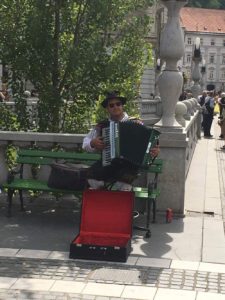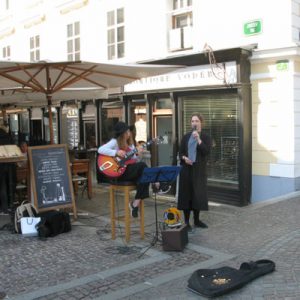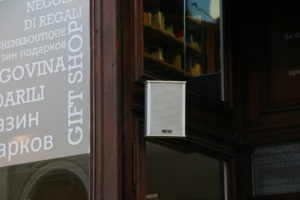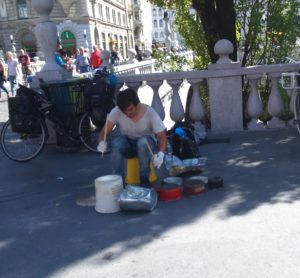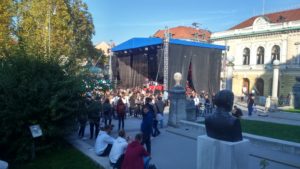Street music came to the forefront of sonic perception in Ljubljana after 2009, when many traffic roads were transformed into pedestrian areas. Musicians, especially instrumentalists, flood the streets especially during the summer months, among themmany traveling musicians. Some of them stand out because they play on traditional musical instruments and perform music from different parts of the world, while others perform widely recognized popular music.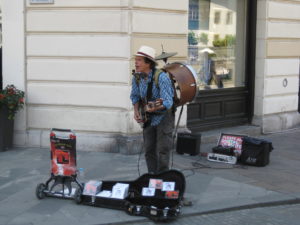
1. A traveling street musician playing on metal containers, Prešeren Square, 5. 9. 2017. Recorded by: Mojca Kovačič.
2. Soundwalk along Čopova ulica, the loudest street in the center of the city, where the sounds of people and music from the speakers of restaurants and cafes are intertwined, Čopova ulica, 16. 4. 2015. Recorded by: Mojca Kovačič.
3. Street music in front of the restaurant, within the Festival of street music, Hribarjevo nabrežje, 29. 9. 2017. Recorded by: Mojca Kovačič.
4. “Talking advertisement” and music from the café loudspeakers at 7. o’clock in the morning, Wolfova street, 14. 9. 2017. Recorded by: Mojca Kovačič.
5. Event with the children’s choir, Town Square, 10. 9. 2015. Recorded by: Tanja Petrović.
6. Street musicians, Shoemaker’s Bridge, March 17, 2016 Recorded by: Ana Hofman.
7. Serbian street musician, who in traditional costume often play on gusle or dvojnice on Ljubljana streets, Stritarjeva street, August 29, 2015. Recorded by: Mojca Kovačič.
8. Street musician, who often plays on the streets of Ljubljana in the traditional costume on the piano accordion, Slovenska Street, on 13 March 2017. Recorded by: Mojca Kovačič.
9. Nika Zorjan concert, Congress Square, 27. 9. 2017. Recorded by: Mojca Kovačič.
Street music is an important part of the city’s soundscape. It consists of music that is broadcasted from the loudspeakers of cafes, pubs, restaurants and shops, music that is part of various sporting and cultural events that often take place in the city center and live music performed by street musicians. Musicians co-create the image and the sound of the city with their appearance, their repertoire, musical instruments and voices, as well as enrich the city’s tourist offer. Street musicians usually try to attract attention of passers-by, some respond, others avoid interaction. The response of the inhabitants and visitors of the city to street musicians and their music differs greatly between the individual cities and even within one city. Musicians therefore carefully choose the places that correspond to their artistic or economic needs. Street music can also reflect the wider economic and political situation in society. For example, following the entry of Slovenia into the European Community, several brass bands from Bulgaria and Romania were seen on the streets. Street music is also a cultural capital and part of a survival strategy for some Slovenian musicians. Some are seen only occasionally, others have become the “emblem” of the city.
In the project we dealt with the issues of the street music function as to how it is perceived by street musicians or by the inhabitants and visitors of the city,hat are their motives for performing on the street, how street music shapes the identity of the city, and to what extent the city controls street music.

